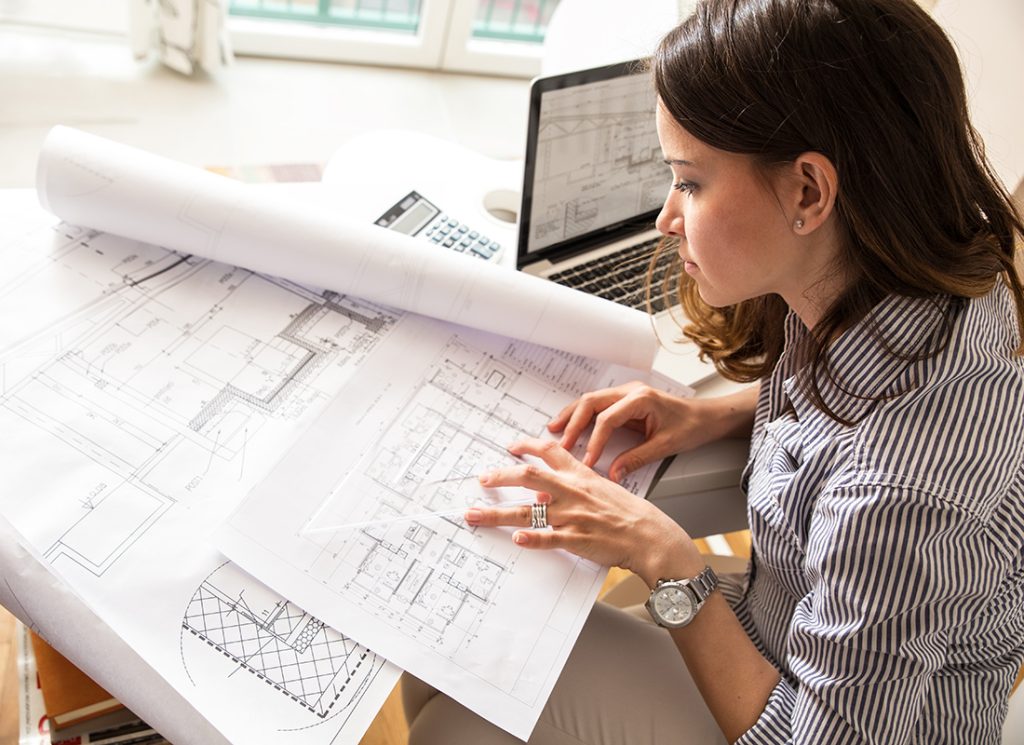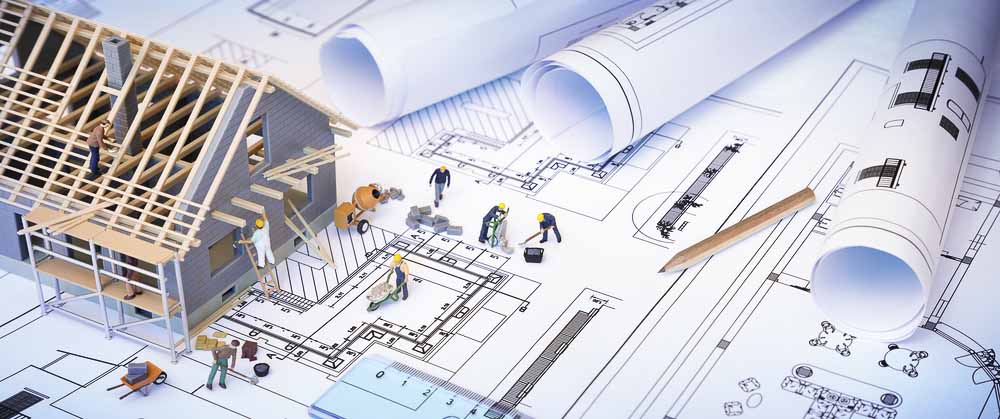Anyone looking to build a new home needs to be aware of the National Construction Code changes and new provisions and how they will impact their project. Changes to the National Construction Code will begin their transition period in May 2023 with the transition period for Livable Housing and Energy Efficiency changes ending on 1 October 2023.
The major focus of these changes are:
- Improving sustainability and energy efficiency in homes (better thermal performance)
- Increasing accessibility in homes and embracing livable housing designs
- Improving Waterproofing
- Reducing condensation
- Removing lead in plumbing products.
In this article, we’re focusing on residential buildings rather than commercial buildings. Though many changes apply to both, it’s best to check with the National Construction Code directly.

What is the national construction code?
The National Construction Code (NCC) is the guideline for the minimum requirements for buildings in Australia. It incorporates all on-site buildings, technical provisions and plumbing and drainage systems throughout Australia. The Australian Building Codes Board, on behalf of the Australian Government and each state and territory government, designs the NCC. The NCC updates every three years, so it’s vital when building that you make sure you’re consulting an updated and current version of the code.
How does the national construction code impact the building of a new home?
How will the changes affect a new home build?
While there are benefits to these changes, they’ll come at a cost. Builders estimate that to meet the new building code changes, new houses could cost another $20,000-30,000 more than they otherwise would. Considering the tough times many home buyers have been through in the last few years, this is certainly a blow. While there are rebates available, they’re unlikely to cover this price increase.
Builders are concerned that the changes are being introduced too hastily and could affect how QLD homes are designed, restricting choices for the consumer. One key concern is that Queensland design will need to value insulation, air-conditioning and double-glazing over being well-ventilated and orientated correctly. There’s also the issue of how much it will cost versus how it affects the changes will be.

National construction code changes part 1 – Residential Energy efficiency requirements
One of the bigger goals of the new changes is to make homes more sustainable and lower power bills for consumers. This includes design and construction provisions to have fewer carbon emissions, embrace renewable resources and lower the costs of creating a comfortable, living environment.

Summary of key changes & the impact this has on a new build
There will be two big changes as follows:
- The minimum star rating as specified by the Nationwide House Energy Rating Scheme (known as NatHERS), will raise from the current 6 stars to 7.
- There will be a whole-of-home, annual energy use budget that will need to be met by new homes. The budget includes the energy use of heating and cooling equipment, hot water systems, lighting and swimming pools.
There will be a lot of smaller design changes new homes will need to make, but they will be ultimately in service of reaching the above goals. Unfortunately, this could add a lot of expenses to your bill in the short term, including insulation, solar panels, and layout. On the flip side, if done well, these changes could save you expenses in the long run when it comes to energy bills.
Advice on how to comply with these changes
- Double or triple glazing windows. Standard windows are more reliable than custom-designed ones.
- Windows need to suit your climate. What works best will vary on where you’re building.
- Home orientation is key to using your environment to its advantage.
- Make the most of natural lighting.
- Install quality insulation.
- Use lighter colours both internally and externally.
- Install Solar panels.
- Ceiling fans may be a requirement in every inhabitable room of a home.
National construction code changes part 2 – Liveable housing design and accessibility.
After energy efficiency requirements, the biggest changes concern accessibility and creating livable housing designs. The purpose is to create homes that will be able to adapt to people throughout their life stages and also help anyone with mobility issues.
First thing first: a livable housing design, or universal design, is a home design that adapts to the changing needs of occupants. This means practical design choices such as reducing steps, wider doorways, and more space in bathrooms and toilets. It also entails providing the means for future adaptations to the home, such as the installation of grabrails or ramps.

Summary of key changes & the impact this has on a new build
There have been many changes to this area of the NCC, with the goal being that new houses will reach a silver level in accordance with the Living Housing Design Guidelines.
Some of the key changes include:
- Having at least one step-free entrance into the home
- At least one entrance door with a minimum width of 820mm (it’d be wise to make this a step-free entrance).
- Increasing the width of internal walkways to fit a walking frame or wheelchair.
- A toilet must be on the entry level (for example, the ground floor of a regular two-storey home.
- At least one hob-less shower with easy access.
- The toilet and bathroom walls need to be reinforced so it is possible to install a support rail in the future.
The size of the impact this will have will depend on your pre-existing design, and the changes you’re going to need to make to comply. Accommodating a step-free entrance for example will be easier in some locations than others (like an even block). Retrofitting a home to be accessible can be very expensive, with costs coming in at around $18,821 for houses and a hefty $20,260 for an apartment. These are ballpark figures as it will depend entirely on what you’re starting with.
When it comes to building a new home, the cost of design change is likely to start at around $1,800 but could go significantly depending on your property, the size of the changes and the builder you’re working with.
Advice on how to comply with these changes
When it comes to making your home more accessible, consider the following:
- Make sure corridors and hallways are easily navigatable
- Bathrooms should include a walk-in shower,
- Stairways need to be wide enough to include room for future adaptations.
- Safe, continuous means of travel from the street/parking to the dwelling entrance
- Add lever door handles
- Lower closer rods.
National construction code changes part 3 – Condensation management and ventilation.
Condensation can cause a variety of problems that can damage your home and affect your health, from mould to structural damage. Ventilation plays a large role in reducing condensation, and the NCC 2022 will have some changes concerning this.

Summary of key changes & the impact this has on a new build
Some major changes have been made to exhaust systems requirements including:
- Exhaust systems must be discharged to the outside of the building (not into the roof space)
- Exhaust systems in bathrooms without sufficient access to outdoor air must be designed to turn on with the lights. Also, they must continue to operate ten minutes after the light is turned off.
- When there isn’t sufficient access to outdoor air, bathroom exhaust systems must be provided with make-up air from another room. For example, an undercut for a separating door.
For roof ventilation, certain cooler climates will require ventilation openings to minimise condensation. In bushfire-prone areas, ventilation may not be required.
Advice on how to comply with these changes
- Work with your builder to choose climate-appropriate materials for your new home
- Discuss ventilation and whether there are any vulnerable areas in your current design.
- Once you move into your home, there are steps you can take to reduce condensation including allowing air to circulate by opening doors and windows periodically.
National construction code changes part 4 – New Waterproofing Standards
There have been some major changes to the waterproofing, both internally and externally, most of which are about being clearer with the guidelines. Previous incarnations of the NCC have been limited when it comes to specifying waterproofing requirements, but this has since been rectified.

Summary of key changes & the impact this has on a new build
External Waterproofing
New standards will be applied to:
- flat roofs and terrace roofs
- balconies, terraces and other similar surfaces which are horizontal and located above an internal space
- any exposed joints in roofs, podiums, balconies or similar structures.
Roofs, balconies or similar horizontal surfaces must use a waterproofing membrane that meets NCC standards. Joints meanwhile must be protected and not located under any water feature, planter box or similar feature.
Internal Waterproofing
There are now more extensive waterproofing requirements for shower walls. All of the shower walls will require water-proofing to a minimum required level of 1800mm or 50mm above the shower rose, whichever ever of the two of these two options is higher.
Any other walls, such as laundry walls, need to be waterproofed up to 150mm.
Any bathroom floor made from materials like particle boards or wood needs to be waterproofed. This also applies to any bathroom on a second floor or higher.
Gradient requirements have been changed for surface finishes.
Waterproof membranes now need to be graded to the drain waste puddle flange.
Advice on how to comply with these changes
- Hire a professional waterproofer to ensure your job is done well.
- Be sure to receive a statement of compliance once the job is completed
- Be sure to ask your building surveyor to check waterproofing is up to scratch.
- A good waterproofing job will save you a fortune in repairs down the track, so be sure to hire a well-regarded contractor.
National construction code changes part 5 – Plumbing and drainage systems
There has been some major change when it comes to lead content plumbing products. These details can be found in the NCC Volume 3 (Plumbing Code of Australia).

Summary of key changes & the impact this has on a new build
From September 1, 2025, all plumbing products that come in contact with drinking water and contain copper alloy must contain less than 0.25%, or be lead-free. In the meantime, the plumbing code allows the use of currently approved plumbing products until 1 September 2025. As it currently stands, about 90% of copper-alloy plumbing products sold in Australia contain some lead. The amount varies significantly depending on the product and what it is used for but can range from 0.25%-6%.
The question you’re no doubt wondering is whether the new products will be safer. The answer is it will reduce the likelihood of any type of lead poisoning, but that the current risk is incredibly low, especially with well-maintained, functioning plumbing.
This requirement does not apply to all plumbing products, only those that are involved with drinking water. Some products that are excluded from the changes include:
- Irrigation
- Residential fire sprinklers
- Fire-fighting equipment
- Washing Machines, dishwashers and similar appliances
- Boilers
- Toilets
- Showers and baths
- Recycled water systems for irrigation or non-drinking purposes.
Lead pipes have historically been the cheapest material to use, hence their popularity. Chances are, prices for products that won’t meet future regulations will fall, and those that do will be more expensive. However, the upside of installing updated plumbing is it will add value to your home.

Advice on how to comply with these changes
The above applies to ALL plumbing products that come in contact with drinking water. This includes taps, fittings, valves, backflow prevention devices, water heaters, boiling and cooling units, water meters and mixers. If it plays a part in your drinking water, it falls under these new changes.
During the three-year transition period, products will start to have labels to show they’re in full compliance with the new code. This also means plumbers will still legally be able to use existing products.

Is it possible to avoid these changes if I act now?
Building before the deadline, or during the transition period may mean your home won’t have to comply with all the changes being made (you will have to meet the NCC 2019 guidelines though). At Buildi, we can help you find ways to save money while still complying with any building codes. Along with finding the perfect builder for you, we will ensure your builder sticks to any building codes while meeting all the conditions of your contract. Get in touch today to find out how we can save you time, money and stress during your building project.


0 Comments